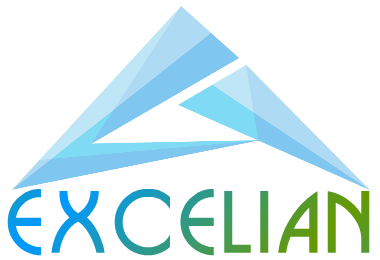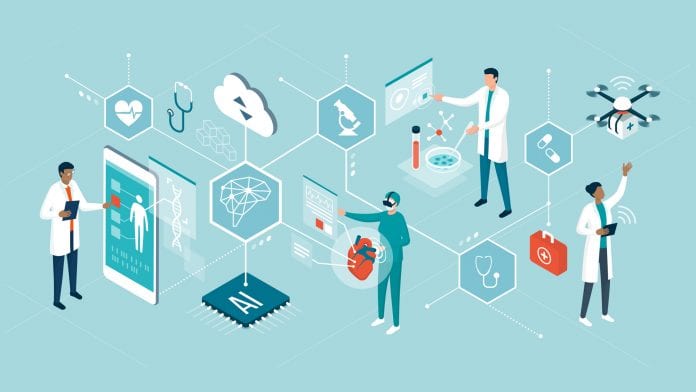With advancements in digital healthcare technologies like artificial intelligence, VR/AR, 3D printing, robots, or nanotechnology, the future of healthcare is being created right before our eyes. In order to be able to influence technology rather than the other way around, we must get conversant with the most recent advancements. The future of healthcare depends on collaborating with technology, and healthcare professionals must adopt cutting-edge medical technology if they want to remain relevant in the years to come. This post will examine 10 ways that medical technology is changing the healthcare industry.
1. Artificial Intelligence
More quickly than any other actor on the healthcare stage right now, including any medical expert, AI algorithms are able to mine medical records, devise treatment plans, or produce medications.
Supercomputers are used by Atomwise to find treatments from a database of molecular structures. The start-up began a virtual search for secure, currently available drugs that may be modified to treat the Ebola virus in 2015. They discovered two medications that the company’s AI algorithm had indicated may considerably lessen Ebola infectivity.
Recently, Google’s DeepMind developed an AI for analyzing breast cancer. On pre-selected data sets to identify breast cancer, the algorithm surpassed all human radiologists by an average of 11.5 percent!
These are just two of the numerous instances of businesses employing artificial intelligence to benefit healthcare, from developing new pharmaceuticals to modernizing medical imaging to mining patient records. Imagine the possibilities for humanity given all these real-world examples if early AI application led to such astounding discoveries!
2. Trackers, Wearables, and Sensors for Healthcare
Health trackers, wearables, and sensors had to be included in my choices since the future of medicine and healthcare is strongly tied to patient empowerment and people using technologies to take charge of their own health. They are excellent tools for self-discovery and taking back control of our lives.
There is a device for every requirement, including those related to managing your weight, stress levels, improving your cognitive capacities, and becoming more generally fit and energized. The best thing about these new, technologically advanced technologies is that they truly make the patients the center of care. These technologies enable people to take charge of their health and make more informed decisions by enabling home health monitoring and remote sharing of results with a doctor.
3. Virtual Reality
Both current and future surgeons are practicing surgeries in virtual reality. These software programs are created and offered by businesses like Osso VR and ImmersiveTouch, and they are currently in use with positive outcomes. According to a recent Harvard Business Review research, doctors who received VR training performed 230 percent better overall than their conventionally trained peers. The former also performed surgical procedures more quickly and precisely.
When employing virtual reality to divert people from unpleasant stimuli, patients with gastrointestinal, cardiac, neurological, and post-surgical pain have demonstrated a decrease in their pain levels. Even better, a 2019 pilot study found that surgical patients had a more positive hospital experience overall and experienced less pain and anxiety after the procedure.
4. Augmented Reality
Users don’t lose touch with reality, and information is delivered to the eyes as quickly as possible. These are two ways that augmented reality differs from virtual reality. With the use of these distinguishing characteristics, both healthcare providers and patients can use AR to advance medicine.
For medical practitioners, it may help surgeons improve their skills and medical students better prepare for real-world surgeries. At Case Western Reserve University, students are already doing this by utilizing the HoloAnatomy program on the Microsoft HoloLens to study anatomy. By employing this technique, medical students can learn the subject without the use of actual people by using precise and accurate, albeit virtual, representations of the human anatomy.
Magic Leap, a similarly promising business, will also introduce its slightly different mixed reality headgear to the medical industry. For the purpose of bringing its spatial computing technology to the healthcare industry, Magic Leap has teamed with SyncThink for brain health, XRHealth for the development of a therapeutic platform, and Brainlab in Germany. Although no commercial products have yet been released as a result of these relationships, we can expect to see them proliferate the healthcare market soon.
5. Nanotechnology
The era of nanomedicine is only starting to emerge. I think that in the near future, nanoparticles and nanodevices will function as precise medication delivery systems, cancer treatment equipment, or miniature surgeons.
Researchers from the Max Planck Institute created microbots that resemble scallops in 2014 with the intention of swimming through your physiological fluids. Colon exams are already performed in a non-invasive, patient-friendly manner using tiny, intelligent pills like the PillCam. In response to smartphone orders, MIT researchers in late 2018 developed an electronic pill that can be wirelessly controlled, relay diagnostic data, or dispense medications.
In the form of smart patches, nanotechnology is also advancing. At CES 2020, the French firm Grapheal displayed their smart patch that can continuously monitor wounds and potentially speed up wound healing thanks to its graphene core.
More real-world applications of nanotechnology in medicine will become apparent as the technology develops. Future PillCams might even take biopsy samples for additional examination, and remote-controlled capsules might make it possible for nano-surgeons to operate on patients.
6. 3D-Printing
All facets of healthcare can benefit greatly from 3D printing. We can currently print blood vessels, medications, artificial limbs, biotissues, and the list goes on and on.
A technique to 3D-print living skin and blood arteries was created in November 2019 by researchers at Troy, New York’s Rensselaer Polytechnic Institute. For burn victims requiring skin transplants, this development is crucial. NGOs that manufacture prosthetics in three dimensions for refugees from war-torn countries include Refugee Open Ware and Not Impossible.
This technique is very helpful to the pharmaceutical sector. Since 2015, 3D-printed medicines have received FDA approval, and researchers are currently developing “polypills” that may be printed in this manner. These include multiple pharmacological layers to help patients follow their treatment regimen.
7. Genome Sequencing
The US government paid over $2.7 billion for the entire Human Genome Project, which is an absurdly large sum of money. Particularly in light of the fact that DNA sequencing industry leader Illumina launched a new device in January 2017 that, according to the business, is “anticipated one day” to order up your entire genome for less than $100. The CEO of the business reaffirmed that Illumina is still striving to meet that goal last year. This would imply that you might be able to get a genetic test for less money than a routine blood test, which can cost anywhere from $10 to $150. Mind-blowing!
There is so much potential in such a test! You can learn important facts about your family history, multifactorial or monogenic medical disorders, and drug sensitivity.
Furthermore, a number of fields, including nutrigenomics, a study that combines genomics, dietetics, and nutrition, are already benefiting from genome sequencing.
Individualized meals based on genetic codes are being offered by some businesses, such the California-based start-up Habit.
8. Medical Tricoder
Every healthcare practitioner has a huge desire for a single all-powerful equipment that can diagnose and evaluate any ailment when it comes to gadgets and quick fixes. It even appeared as the medical tricorder in Star Trek, albeit only on screen. The portable, hand-held device listed vital signs, other information, and a diagnosis as soon as Dr. McCoy grabbed his tricorder and scanned a patient. For doctors, it served as the Swiss Army knife.
We now live in a world where comparable technologies, which were formerly the fantasy of sci-fi lovers, are accessible thanks to the exponential advancement in healthcare technology! One such palm-sized device that can measure ECG, heart rate, oxygen saturation, temperature, blood pressure, and more is the Viatom CheckMe Pro. There are other businesses developing gadgets like the MedWand, which in addition to measuring a number of vital signs, comes equipped with a camera for telemedicine. The FDA-approved BioSticker from BioIntelliSense is another option. Despite being small and thin, it is capable of measuring a variety of factors, including breathing rate, heart rate, skin temperature, body position, activity levels, sleep status, gait, and more.
The tricorder is a ways away from the devices that are already on the market, but we will get there eventually. For instance, you’ll see high-powered microscopes with cellphones examining skin lesion photographs and swab samples. Sensors might pick up on DNA anomalies or find antibodies and certain proteins. Almost anything we have now, including an electronic nose and ultrasonic probe, may be connected to a smartphone to increase its functionality.
9. Revolutionizing Drug Development
New medication development is currently a time- and money-consuming procedure. Nevertheless, there are approaches to enhance medication development, using strategies like artificial intelligence and in silico trials. Such cutting-edge techniques and methods already rule the pharmaceutical industry and will continue to do so in the years to come.
Businesses like Turbine, Recursion Pharmaceuticals, and Deep Genomics are utilizing the power of A.I. to create unique treatment approaches and new drug candidates quickly and increase time to market, all while reducing costs and saving lives.
The development or regulatory assessment of a medical product, gadget, or intervention uses these customized computer simulations.
Organs-on-a-chip, which are already in use, have made important advancements in this sector even if existing technology and biology understanding prevent fully mimicked clinical trials. The “most complete, mathematical model of human physiology ever built,” also known as HumMod, is being used in a number of scientific initiatives. The Virtual Physiological Human (VPH) Institute also developed virtual models that are utilized to research osteoporosis and cardiac conditions.
Think of the possibilities if we could quickly test tens of thousands of novel medications on billions of virtual patients. This phase of development could come soon.
10. Robotics
Robotics in healthcare is one of the most intriguing and rapidly developing topics; advances span from robot companions through surgical robots until pharmabotics, disinfection robots, or exoskeletons.
Exoskeletons have a successful year in 2019. It witnessed the first exoskeleton-assisted surgery in Europe and a tetraplegic guy who could mentally operate an exoskeleton! These sci-fi costumes can also be used to help patients with spinal cord injuries and help nurses move elderly patients, among many other things.
In the medical field, robot companions can be used to cure mental health conditions, relieve loneliness, and even assist children who are suffering from chronic illnesses. Existing examples include the robots Jibo, Pepper, Paro, and Buddy. Some of them even include touch sensors, cameras, and microphones for communication with their users.
For instance, ikki from an Australian startup helps children with chronic illnesses track their meds, temperature, and respiratory rate while lulling them to sleep with stories and music.


0 Comments